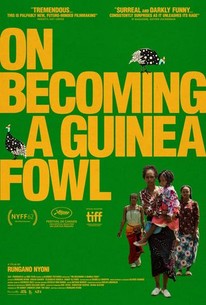Becoming a Guinea Fowl: A Surreal Uncovering of Family Secrets
In the realm of cinematic storytelling, few films manage to weave surrealism with the raw, unfiltered truths of family dynamics like “Becoming a Guinea Fowl.” “This vibrant tale unfolds on a deserted road in the dead of night, where Shula, a young woman, stumbles upon the lifeless body of her uncle. As the film progresses, viewers are drawn into a web of buried secrets that encompass the complexities of a middle-class Zambian family. This unique perspective offers a fascinating exploration of the lies we tell ourselves and the haunting truths that lurk beneath the surface.
Setting: The Night of Revelation
The film begins with an eerie atmosphere, immediately engaging the audience. Shula’s encounter with her uncle’s body serves as a catalyst for the drama that unfolds. The empty road symbolises not only the journey through physical space, but also through the emotional landscapes of grief, denial and revelation. The stark contrasts of the night and the vivid colours that follow serve to heighten the surreal experience and encourage the viewers to delve deeper into the narrative.
Character Dynamics: Uncovering Family Secrets
Shula and her cousins play a key role in unraveling the intricate tapestry of their family history. Their interactions are filled with both love and anger, highlighting the complexities that often arise in family relationships. As the funeral begins, the cousins confront long-buried secrets that have shaped their identities and their collective family narrative. This exploration of character dynamics is essential to understanding the film’s overarching themes.
- Shula’s journey of self-discovery and acceptance.
- The impact of family expectations on personal decisions.
- Confronting past trauma and its implications for the future.
Thematic Elements: Lies and Truths
At its core, Becoming a Guinea Fowl is a film about the lies we tell ourselves and the truths we often fake. The title itself suggests transformation, perhaps reflecting the characters’ struggle to cope with reality. The symbolism of the guinea fowl—a bird often associated with family and community in Zambian culture—emphasizes the importance of relationships and the weight of familial obligations.
Throughout the film, the characters struggle with their identities tied to their family history. The secrets they reveal are not only personal, but also resonate with broader social themes, inviting viewers to reflect on their own narratives. The universal exploration of truth and deception is what makes the film resonate with audiences across cultures.
Working and Style: A Visual Feast
Becoming a Guinea Fowl is one of its defining features. the impressive cinematography. The visual storytelling complements the surreal elements of the narrative, creating a vivid backdrop for the unfolding drama. The use of colour, light and shadow add to the emotional weight of the film, drawing viewers into Shula’s world.
Rungano Nyoni’s signature style draws on a variety of influences, resulting in a film that is both unique and relatable. The mix of humor and tragedy adds depth to the narrative, allowing the audience to connect with the characters on multiple levels. The surreal elements highlight the absurdity of certain situations, and the striking visuals keep the story grounded in reality.
Reception and Impact: A Conversation Piece
When “Becoming a Guinea Fowl” was released, it was critically acclaimed for its innovative storytelling and powerful themes.




 14/31
14/31